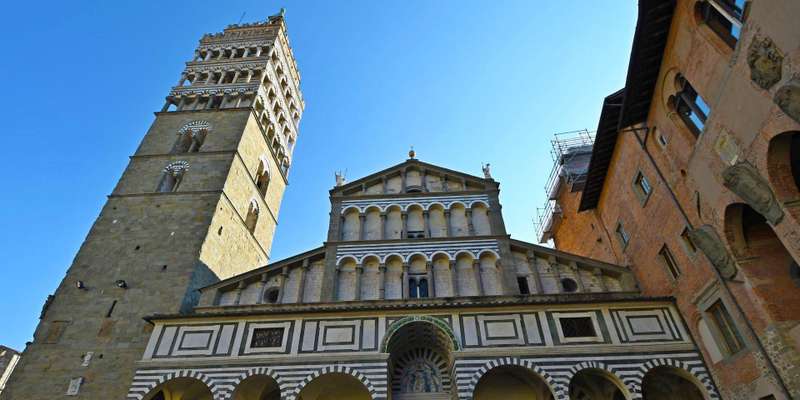- Home
- Useful Tips
- Where to buy traditional...
Finding authentic Pistoian leather goods can feel overwhelming for visitors. With over 70% of travelers reporting purchases of counterfeit 'local crafts' in Italy, the risk of wasting money on mass-produced imitations is real. The historic leatherworking tradition in Pistoia dates back to medieval tanneries, yet today's market floods with imported replicas that lack the distinctive vegetable-tanned quality. You want heirloom-quality pieces that support local artisans, not factory-made souvenirs with inflated price tags. This challenge goes beyond mere shopping – it's about preserving centuries-old craftsmanship while making meaningful purchases you'll treasure for years. The frustration of returning home with peeling 'genuine leather' that barely lasts a season is avoidable when you know where to look.


Identifying authentic Pistoian leather craftsmanship
True Pistoian leather reveals itself through subtle details most tourists overlook. The patina develops richer tones over time, unlike synthetic finishes that remain static. Run your fingers along stitching – local artisans use thicker, waxed threads in contrasting colors as a signature. Check for the 'Pelle Conciata al Vegetale in Toscana' stamp, a protected mark guaranteeing vegetable tanning with chestnut extract. Smell matters too; authentic hides carry an earthy aroma from natural tannins rather than chemical odors. Visit workshops where you see artisans hand-burnishing edges – Via degli Orafi and Corso Gramsci house several multi-generation boutiques still using 14th-century techniques. These masters proudly explain their process, a stark contrast to pushy sales staff at tourist-focused 'outlets'. Remember, quality comes at fair prices – if a 'designer' bag seems suspiciously cheap, it likely skipped the 60-day tanning process that defines Pistoia's legacy.
Top family-run leather ateliers locals frequent
Step off the Piazza del Duomo's beaten path to discover Pistoia's hidden workshops. Pelletteria Menchetti, operating since 1923, crafts bespoke briefcases using the same oak-barrel tanning methods as their great-grandfather. For equestrian-inspired pieces, Laboratorio Mario Giannini supplies Florence's polo teams with durable saddlery repurposed into stunning handbags. The unassuming Antica Cuoieria Pistolese near Sant'Andrea church produces buttery-soft journals with hand-marbled paper inserts – perfect for meaningful gifts. These artisans rarely advertise, relying on word-of-mouth from Tuscan families who've trusted them for decades. Morning visits yield the best interactions, when masters aren't rushed by tour groups. Don't hesitate to ask about customization; many workshops will monogram pieces or adjust strap lengths while you explore nearby attractions. Unlike chain stores, these craftsmen remember returning customers, often sharing stories behind their tools and techniques.
When to visit for seasonal deals without crowds
Pistoia's leather shopping follows rhythms most visitors miss. July's Blues Festival brings extended workshop hours with live demonstrations, while November's Fiera di San Bartolomeo features centuries-old tannery stalls in the historic center. Weekdays between 10-12 AM offer tranquil browsing before day-trippers arrive from Florence. Savvy shoppers time visits for January's 'saldo' sales, when last season's colors get discounted 30-50% without sacrificing quality. Avoid Saturdays when cruise ship passengers overwhelm the centro storico. Rainy days prove ideal for leather shopping – artisans stay indoors crafting, and you'll find them more receptive to sharing trade secrets. Many workshops close August 10-25 for ferragosto holidays, so plan accordingly if seeking custom orders. Those combining purchases with day trips should prioritize mornings in Pistoia before exploring nearby Montecatini Terme – the reverse route means arriving when shops take afternoon siestas.
Caring for your Pistoian leather to last generations
That exquisite vegetable-tanned wallet deserves proper maintenance to develop its legendary patina. Unlike treated leathers, Pistoia's natural hides require beeswax-based conditioners (never silicone sprays) applied every six months. Store items away from direct heat sources which cause premature cracking. When rain spots appear, simply buff with a dry chamois – water marks fade as oils redistribute. For bags, stuff with acid-free paper to maintain shape between uses. Local artisans swear by olive oil soap for cleaning, though sparingly applied. Should straps loosen or hardware need replacement, most workshops offer lifetime repairs for original owners – a service fast-fashion retailers can't match. These pieces grow more beautiful with age; that scratch from your Roman holiday will blend into the leather's evolving character. Properly cared for, Pistoian leather becomes family heirlooms, developing richer tones that tell your travel stories for decades.
